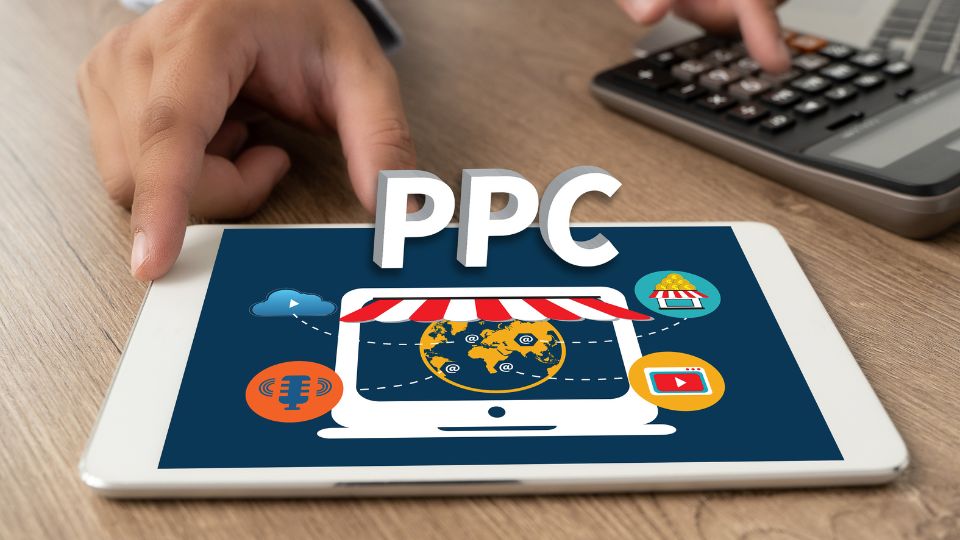Every Amazon seller begins their journey with excitement — the thrill of launching that first product, the optimism that sales will flood in, and the belief that success is just a few clicks away. But sometimes, reality hits hard. The listing is polished, the images are sharp, the PPC campaigns are running — yet, sales are flat. You’ve done “everything right,” but the market isn’t responding.
This is the moment every seller dreads: realizing you may have picked the wrong Amazon product. It’s not about failure; it’s about recognition. The earlier you spot the signs, the more time, money, and energy you can save. Let’s break down the red flags that signal you’re on the wrong path — and more importantly, how to recover before it’s too late.
Sign #1: Sales Are Flat Despite Great Optimization
You’ve invested in stunning listing images and persuasive copy. Your listing ranks decently, traffic looks good — but conversions barely move. It’s one of the most frustrating signals for sellers who’ve done everything by the book.
When sales remain stagnant despite great optimization, it often points to a deeper issue — product-market mismatch. Maybe you overestimated the demand. Maybe your audience prefers a slightly different version, color, or feature. Sometimes it’s simply a seasonal slump — but other times, the market just doesn’t care enough.
Ask yourself: “Why is my Amazon product not selling?” If your PPC ads are performing well yet units aren’t moving, the answer may not lie in your ads or SEO — it may lie in the product itself. A wrong Amazon product can’t be fixed by marketing alone.
Sign #2: High Clicks, Low Conversions — The Buyer Disconnect
You’re getting plenty of clicks on your ads. The thumbnails are strong, the titles pull attention, and the CTR looks healthy. But conversions? Disappointing. That’s a glaring sign of buyer disconnect — where shoppers are curious enough to visit but not convinced enough to buy.
This often happens because of bad Amazon product research. Perhaps the features you thought mattered don’t actually resonate with real buyers. Maybe you designed your listing for the wrong audience — focusing on aesthetics instead of solving a problem.
When your traffic doesn’t translate into sales, it’s not an ad problem — it’s a positioning problem. The visuals, reviews, and perceived value must align with what the buyer truly wants. Remember: curiosity gets clicks, but clarity and trust drive conversions.
Sign #3: Negative Reviews Reveal a Core Product Flaw
A few negative reviews are normal. But when they start echoing the same complaint — “strap broke after 3 days,” “leaks easily,” “not as shown” — you’re facing a core product flaw. This isn’t a fixable issue through customer service or keyword tweaks. It’s a design or quality failure that signals a deeper problem.
Patterns in reviews are the truest mirror of your product’s reality. If you see recurring pain points that reflect poor manufacturing, design weakness, or user dissatisfaction, it’s time to confront the possibility that this product may not survive long term.
So, what are the signs of a failed product on Amazon? Repeated functional complaints, high return rates, and declining ratings are the biggest clues. When the very experience you’re selling falls short of buyer expectations, no amount of optimization can save it.
Sign #4: You’re Competing on Price, Not Value
If every time a competitor drops their price, you feel forced to match it — you’re in a dangerous game. This “race to the bottom” happens when your product offers no meaningful differentiation.
When you picked your product, you might have assumed that quality images and catchy titles would set you apart. But if buyers perceive every option as the same, they’ll default to the cheapest one. That’s when Amazon product failure becomes inevitable.
In such saturated markets, the only way to survive is by competing on value, not price. Strong brands emphasize durability, aesthetics, or emotional appeal — something that can’t be compared rupee to rupee. Price wars erode both confidence and profitability, leaving you burnt out and questioning your entire brand direction.
Sign #5: Inventory Is Stuck or Moving Too Slowly
You glance at your Seller Central dashboard — and those units you confidently ordered months ago are still sitting idle. Low sell-through rates mean storage fees keep adding up while your capital stays locked.
Slow-moving inventory is one of the clearest symptoms of a wrong Amazon product. It reveals that your demand assumptions were off — perhaps the market wasn’t big enough, or your offer didn’t resonate. The longer your stock sits, the more pressure you’ll feel to discount, bundle, or liquidate.
One seller recently shared how their 500 units of a “hot kitchen gadget” turned cold within weeks. They misread the trend curve — by the time their shipment landed, competitors had already flooded the space. The result? Months of holding costs and eventual clearance sales at a loss.
Inventory is data. If it’s not moving, it’s telling you something. Listen early, before storage fees eat into your next product’s launch fund.
Sign #6: PPC Costs Keep Rising Without ROI
You started with a manageable ACoS. Then gradually, to stay visible, you raised bids. Now, your daily spend is higher than your profits — yet you hesitate to pause campaigns out of fear of losing rank.
When your ad costs climb faster than your sales, it’s often because your product-market fit is weak. You’re trying to “buy” validation through visibility. Good products sustain moderate ad spend because they convert efficiently. But a wrong product forces you to overspend just to stay afloat.
This is a common trap — sellers confuse impressions with progress. They think visibility equals success. But if your ACoS keeps climbing while ROI drops, the market is rejecting your offer. As one PAA question puts it: “What mistakes cause Amazon sellers to lose money?” Over-reliance on PPC to fix a poor product is high on that list.
Sign #7: You’ve Lost Confidence in the Product’s Future
This is the silent killer. The moment you, the seller, stop believing in your own product, everything else starts falling apart.
You hesitate to restock, delay ad tweaks, and subconsciously withdraw from marketing efforts. It’s not laziness — it’s your intuition signaling that this product no longer excites or convinces you. That inner voice often speaks before the data confirms it.
These are the signs of a bad Amazon product that don’t show up on spreadsheets. The emotional toll — the frustration of watching competitors outpace you, the exhaustion from constant tweaks — all point to one truth: it’s time to move on.
Losing confidence isn’t a weakness. It’s clarity. And clarity is the first step to recovery.
How to Recover from a Wrong Product Decision
The good news? A wrong product doesn’t mean a dead business. You can recover — if you act strategically. The key is distinguishing between what’s fixable and what’s not.
Start by asking: Can I recover from a bad product choice on Amazon? Absolutely — if the core issue isn’t structural. For example, if complaints revolve around packaging or color options, fix those. If conversions are low, A/B test your images and infographics.
But if you’re seeing fundamental design flaws or zero traction after months, don’t cling. Instead, pivot smartly. Try bundling with a complementary product, launching a variant, or repositioning the listing for a different target audience.
When all else fails, exit gracefully. Clear inventory through deals or small discounts, recover cash, and redirect that capital into better research. Every failed product is tuition — the price you pay for mastery.
Lessons from Failed Amazon Products (and Comebacks)
Many successful sellers today started with failure stories. One seller’s “back-pain massager” flopped due to poor quality control. They regrouped, switched suppliers, and launched an improved version with verified certifications — now a 6-figure brand.
Another seller’s “eco storage boxes” failed because the niche was oversaturated. They learned the power of micro-niche targeting and re-launched with a modular version designed for small apartments. The difference? Data-driven research.
Using tools like Helium 10 or DataDive, they validated keywords, analyzed competitor reviews, and ensured the next launch had proven demand. In both cases, the comeback wasn’t luck — it was learning.
The root of most product failures isn’t luck either; it’s bad Amazon product research. When research relies on assumptions instead of evidence, disappointment follows. But when you let data guide you, each launch becomes smarter and safer.
FAQs: Amazon Product Failure Questions Answered
Why is my Amazon product not selling?
It could be due to poor differentiation, lack of demand, or weak perceived value. Even well-optimized listings fail when the product itself doesn’t solve a genuine problem or stand out visually.
How do I know if I chose the wrong product to sell on Amazon?
Look for consistent underperformance — low sales, weak conversions, poor feedback. If multiple metrics stay flat despite continuous improvements, you may have chosen the wrong Amazon product.
What are the signs of a failed product on Amazon?
Flat sales, climbing ad costs, and recurring negative reviews. If you’re competing solely on price and still losing, those are strong indicators.
Can you recover from a bad product choice on Amazon?
Yes, through rebranding, repositioning, or bundling strategies. If the problem isn’t structural, refine the offer and relaunch. If it is, exit quickly and reinvest in validated ideas.
What mistakes cause Amazon sellers to lose money?
Overspending on ads, ignoring customer feedback, and emotionally holding onto products that the market has rejected. Detachment and data-based decisions are your best recovery tools.
Every “Wrong” Product Is a Lesson in Disguise
Every successful Amazon seller has a product graveyard — items that didn’t click, listings that failed, launches that flopped. What separates winners from quitters is how they respond.
A wrong product isn’t the end; it’s the beginning of wisdom. It teaches you to ask better questions, validate better, and understand customers deeply. Each setback shapes your research instincts and sharpens your decision-making.
If you can treat every “failure” as a case study, not a catastrophe, you’ll evolve into a more strategic and resilient seller. Remember, failure doesn’t mean the product was bad — it means your data wasn’t deep enough. And that’s a fixable problem.
Learn How to Pick Winners with Data
If you’re ready to stop guessing and start validating, it’s time to master product research the right way. Join our 3-Day Amazon Business Training where you’ll learn how to identify demand, analyze competition, and validate winning products using real tools and data.
Learn to validate ideas with data, not guesses — enroll today! Because the next product you launch shouldn’t be a gamble — it should be a calculated step toward success.









2 Responses
Insightful actions to learn frm mistakes and grow ,
Rather than discontinue business.
Useful info